Creating a New Graphmart
Follow the steps below to create and activate a new Graphmart.
You can also create a Graphmart by copying an existing one. For instructions, see Copying a Graphmart.
- In the Anzo application, expand the Blend menu and click Datasets. Anzo displays the Datasets screen, which lists the catalog of Datasets. For example:
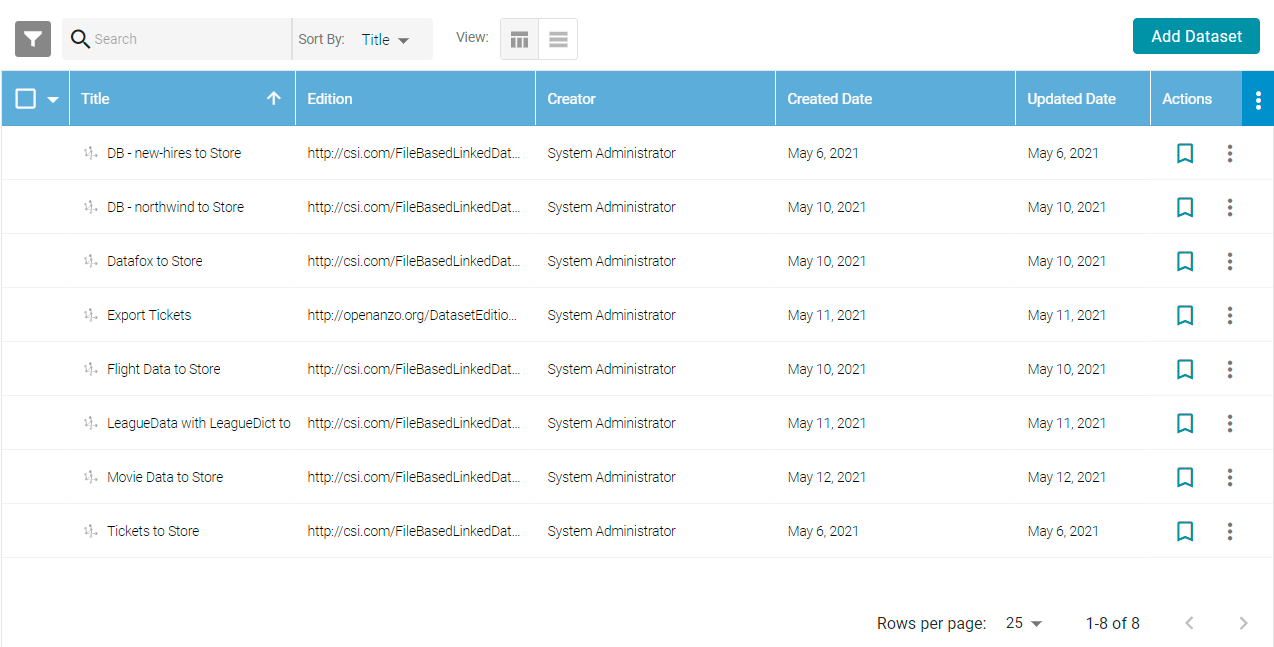
- In the Dataset catalog, click the checkbox next to each Dataset that you want to add to the new Graphmart. Hover the pointer over an item to display the checkbox in the left column. Anzo adds the Datasets to the shopping cart and additional icons become available at the bottom of the screen. For example:
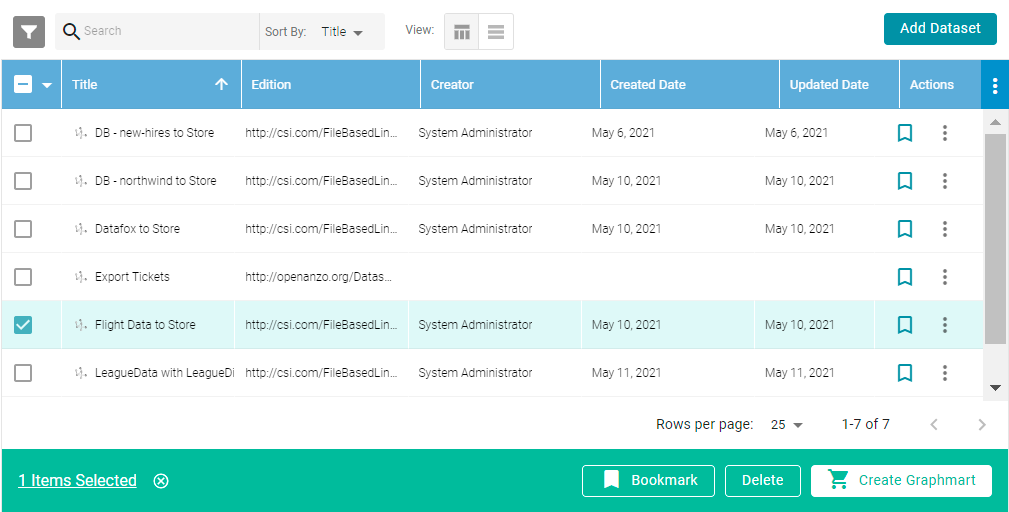
- Click the Create Graphmart button. Anzo displays the Create Graphmart screen.
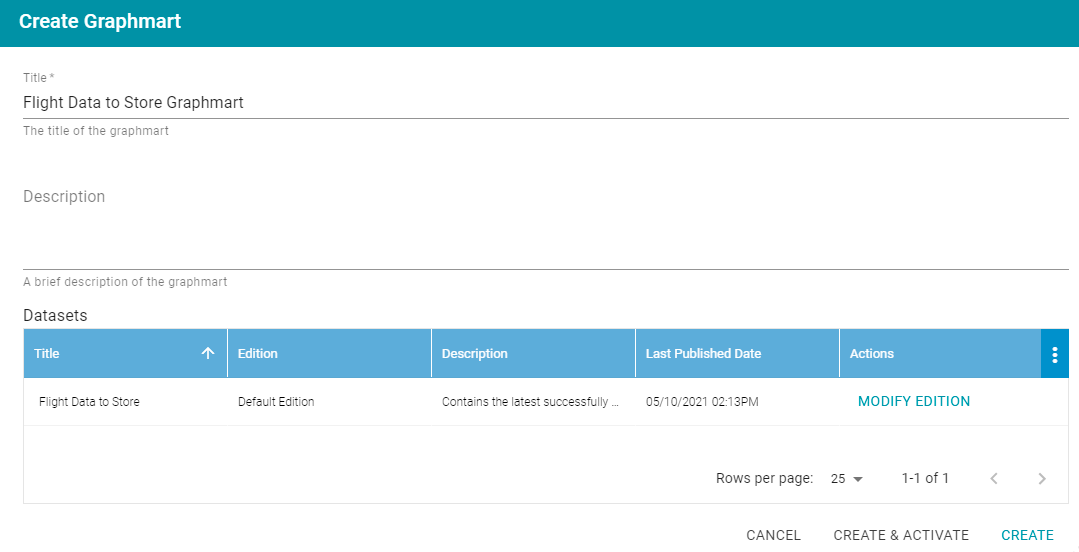
Anzo populates the Title field by appending "Graphmart" to the data set name.
- On the Create Graphmart screen, you have the option to edit the Title and add an optional Description.
- By default the current working edition (Managed Edition) of the Dataset is selected. If you want to select a different Edition, follow these steps:
- click Modify Edition. The Modify Edition dialog box is displayed. For example:
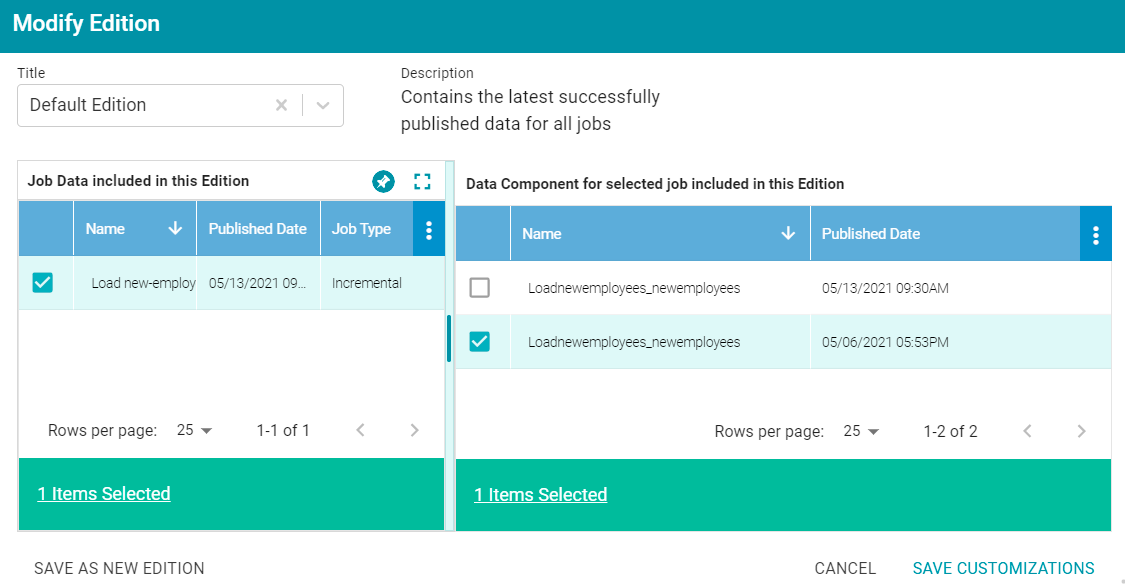
- To choose a different Edition, click the drop-down list at the top of the screen and select the Edition to use.
- If you want to make changes to the selected Edition, select or clear the Job Data checkboxes on the left side of the screen. Each time you select a job, the Data Components for that job are displayed on the right side of the screen. Select or clear the Data Component checkboxes to include or exclude components.
When you make changes to an Edition while creating or changing a Graphmart, Anzo creates a copy of the Edition (with the changes) and uses the copy as a Dataset in the Graphmart. The original published Edition remains unchanged. For more information about changing or creating Editions, see Managing Dataset Editions.
- When you are finished making changes, choose one of the following options for saving the changes:
- To save the changes as a new Saved Edition, click Save As New Edition. Anzo displays the Create New Edition dialog box. Specify a Title and optional Description and click Save.
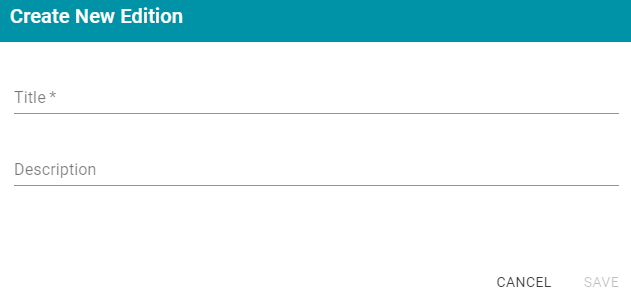
- To save the changes as a copy of the existing Edition, click Save Customizations. Anzo clones the Edition and adds the copy to the list on the screen. For example, the image below shows a Saved Edition that has been modified. A copy of the Edition with the modifications was added to the Datasets list.

- To save the changes as a new Saved Edition, click Save As New Edition. Anzo displays the Create New Edition dialog box. Specify a Title and optional Description and click Save.
- click Modify Edition. The Modify Edition dialog box is displayed. For example:
- To create the Graphmart without activating it, click Create. If you want to create the Graphmart and activate it, click Create & Activate. Anzo creates the Graphmart and displays the Graphmart Overview screen. For example:

- Modify any of the Data Load and Graphmart settings as needed. For details about the options, see Graphmart Settings Reference.
- You can add any number of Data Layers to enhance the data in the Graphmart. For information, see Adding Data Layers to Graphmarts.
- If the Graphmart is not yet loaded to AnzoGraph, slide the slider at the top of the screen from Inactive to Active to start loading the data into memory and executing the Data Layer steps.
If you have more than one static AnzoGraph engine configured or you have a Cloud Location configured for dynamic AnzoGraph deployments, Anzo displays a Select an AnzoGraph Query Engine dialog box. Click the drop-down list to select the engine to load the graphmart to, or select Spin up new AnzoGraph (if available) to deploy a new instance. Then click OK.
If you want to cancel Graphmart activation while data is loading, open the Activity Log by clicking the Activity Log icon (![]() ) in the main menu bar. Then click Cancel for the Provisioning...graphmart activity. For example:
) in the main menu bar. Then click Cancel for the Provisioning...graphmart activity. For example:
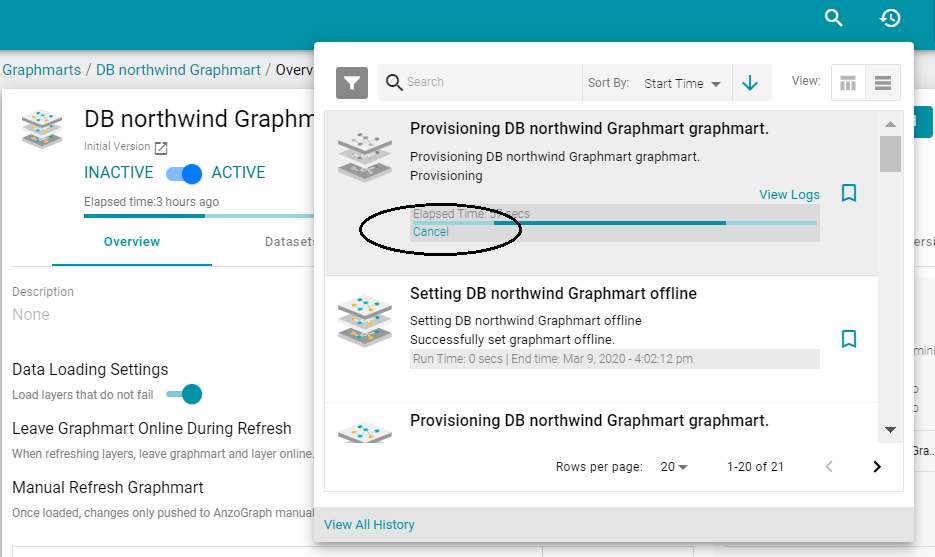
Once the Graphmart is activated, the data is available to access and analyze. For more information, see Accessing and Analyzing Data.